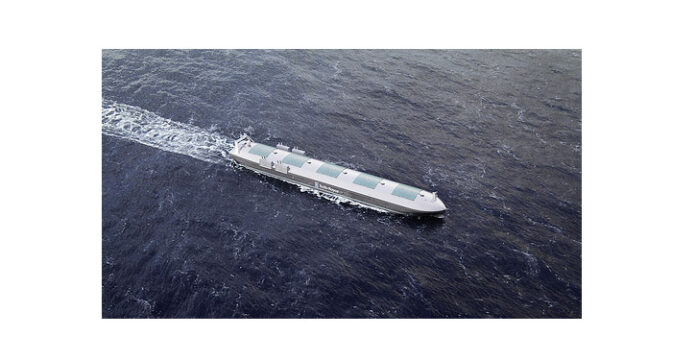Rolls-Royce reveals future shore control centre for unmanned cargo vessels
Rolls-Royce on Tuesday this week unveiled its vision of the land-based control centres that we believe will remotely monitor and control the unmanned ships of the future.
In videos and photos shown Tuesday, Rolls-Royce presents a vision of the future in which a small crew of 7 to 14 people monitor and control the operation of a fleet of vessels across the world. The crew uses interactive smart screens, voice recognition systems, holograms and surveillance drones to monitor what is happening both on board and around the ship.
Iiro Lindborg, General Manager, Remote & Autonomous Operations, Ship Intelligence, Rolls-Royce, said: “We’re living in an ever-changing world where unmanned and remote-controlled transportation systems will become a common feature of human life. They offer unprecedented flexibility and operational efficiency. Our research aims to understand the human factors involved in monitoring and operating ships remotely. It identifies ways crews ashore can use tools to get a realistic feel for what is happening at sea.”
The film marks the final stage of research that will inform the design and construction of a project demonstrator before the end of this decade. An effective remote operations centre is essential to the company’s plans to develop autonomous and remote controlled vessels.
[metaslider id=1276]
“The autonomous ship does not mean removing human beings entirely from the picture, as is sometimes stated. Unmanned ships need to be monitored and controlled and this will require entirely new kinds of work roles, tasks, tools and environments. The future shore control centre concept has been designed by emphasising the user experience of the human operators. By focusing on the operators’ point of view, it is possible to introduce meaningful, pleasurable and engaging new roles for the ships’ shore control centre professionals,” said Eija Kaasinen, Principal Scientist at VTT Technical Research Centre of Finland Ltd.
The research was undertaken by VTT and University of Tampere research centre TAUCHI (Tampere Unit for Computer Human Interaction) in collaboration with Rolls-Royce. It explored the lessons learned from other industries where remote operation is commonplace, such as aviation, energy, defence, and space exploration.
The video is the latest in a series of films developed to present Rolls-Royce’s vision of future shipping known as the ‘oX’ operator experience concept and introduced in 2014. Previous studies have looked at the user experience of future command bridges on Platform Supply Vessels, container ships and tugs.
Mikael Wahlström, Senior Scientist at VTT said: “We need to understand current work by field studies. This allows the creation of innovations that reflect the positive aspects of existing job practices, which are not always obvious. If, for example, a mechanic can assess the engine status by hearing the engine noise, it should be beneficial to be able to do the same at a remote control centre.”
In April Rolls Royce is set to reveal separate research findings, which the company believes will set the direction for the development of remote and autonomous shipping.




